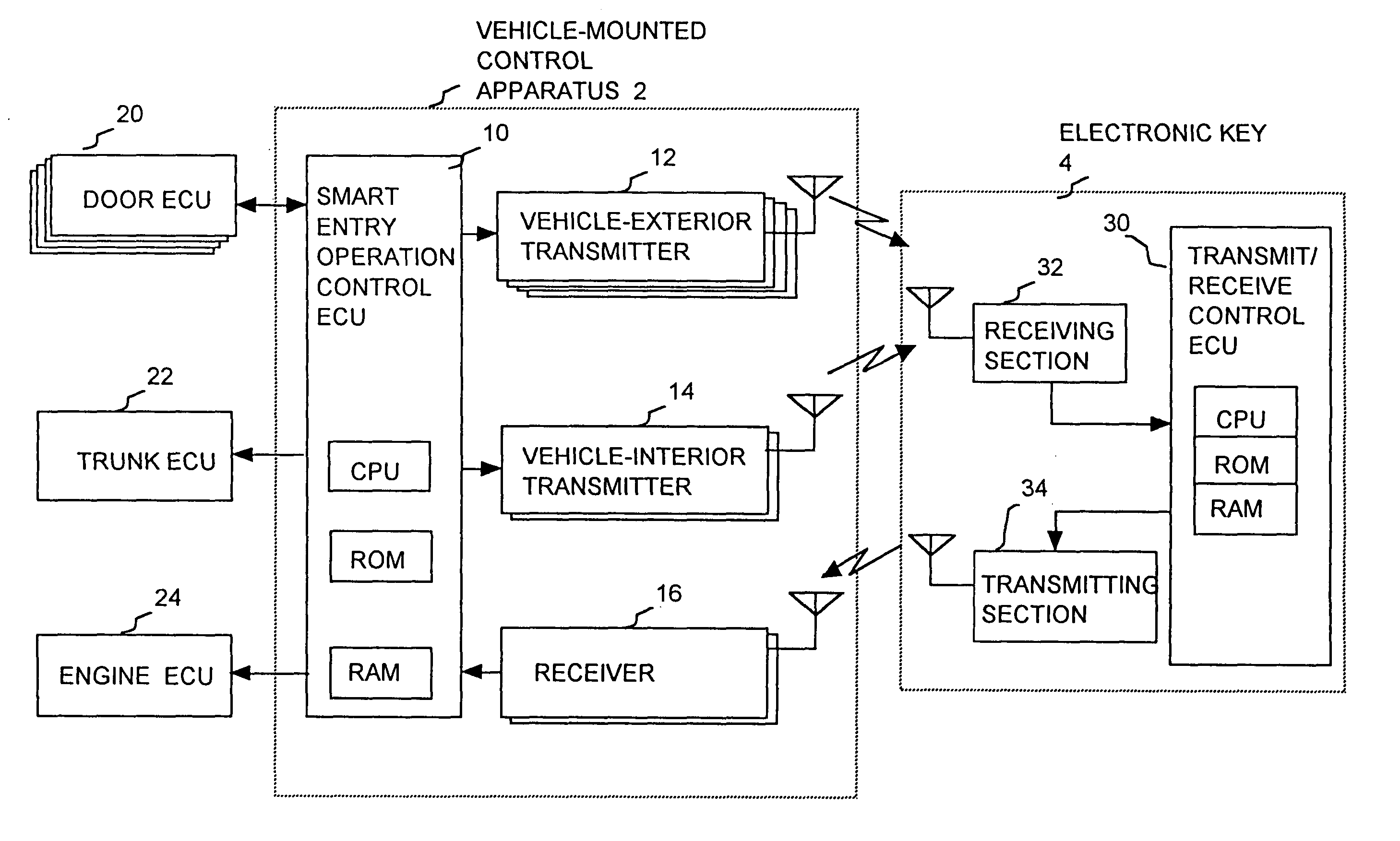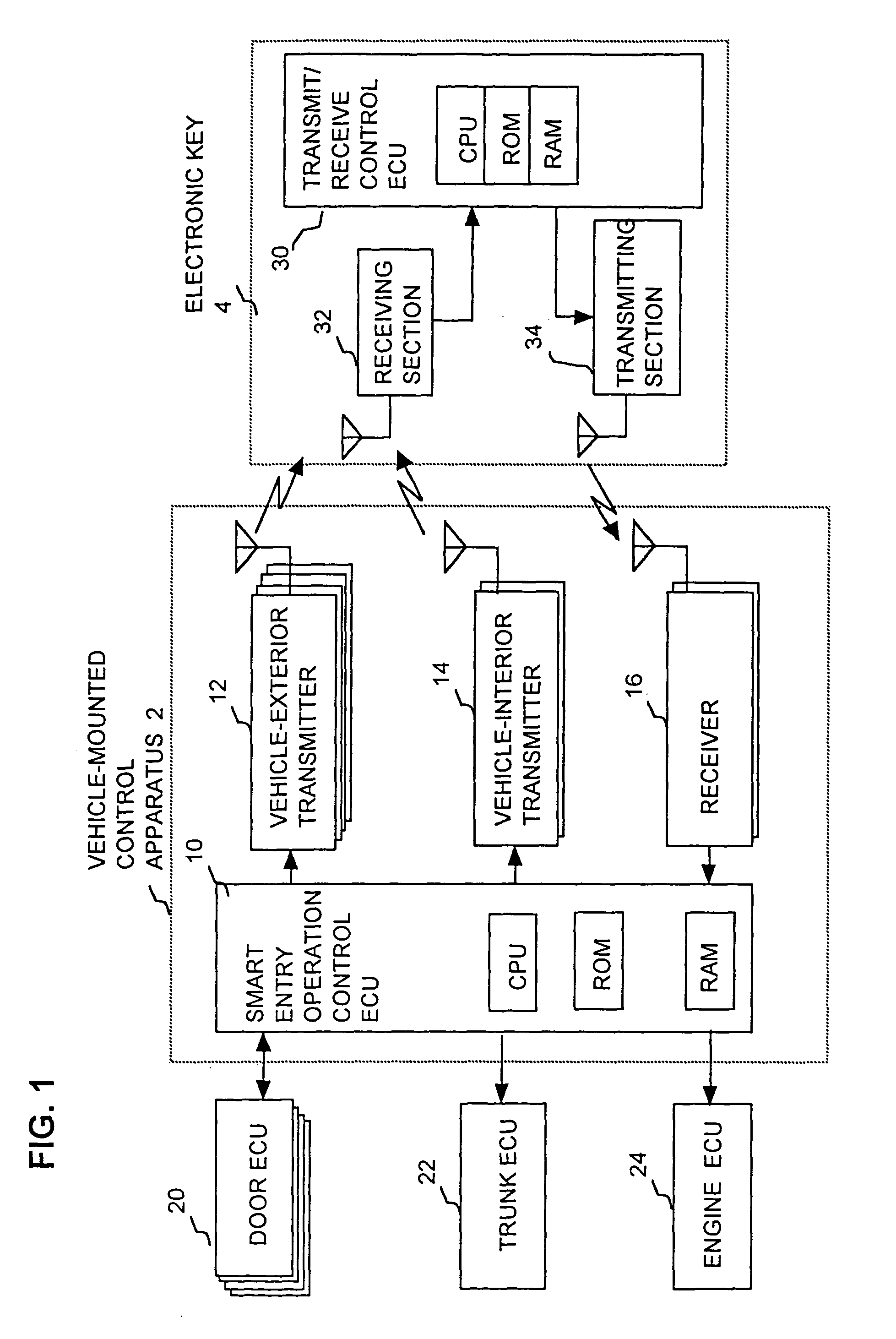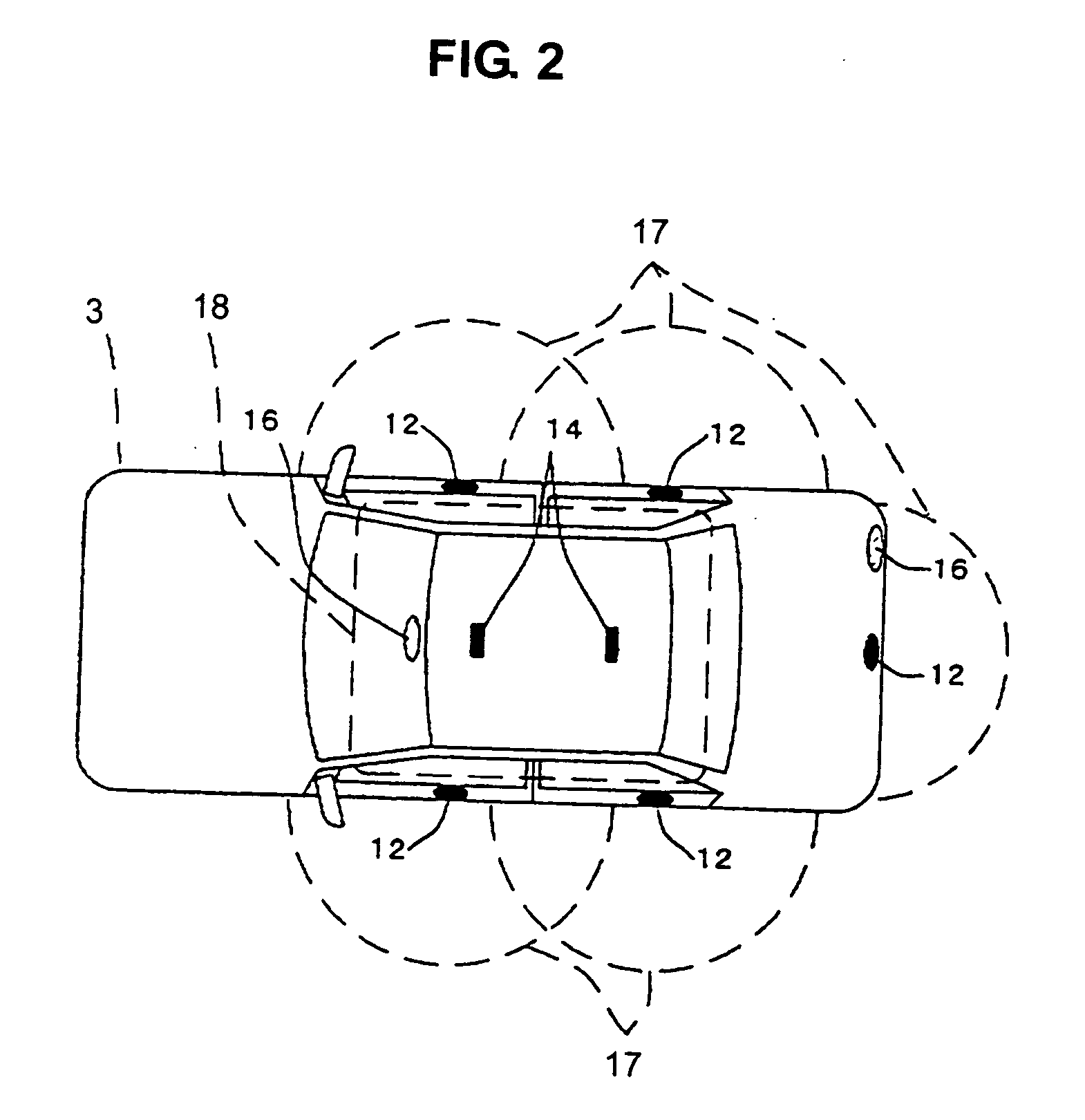Remote control system for controlling a vehicle with priority of control access being assigned to the most recent user of the vehicle
a remote control system and vehicle technology, applied in the field of remote control systems for vehicles, can solve the problems of inability to effect the desired control operation, dissatisfaction of users of such a system, and the inability of vehicle-mounted control apparatuses to reliably opera
- Summary
- Abstract
- Description
- Claims
- Application Information
AI Technical Summary
Benefits of technology
Problems solved by technology
Method used
Image
Examples
Embodiment Construction
[0031] FIG. 1 is a system block diagram of an embodiment of a smart entry system according to the present invention. The system is formed of a vehicle-mounted control apparatus 2 which is mounted on the host vehicle, and a plurality of portable apparatuses constituted by respective electronic keys 4 that are assigned to the host vehicle and are carried by users of the host vehicle (with only a single electronic key 4 being shown in the drawing).
[0032] Each electronic key 4 is configured for transmitting and receiving data by modulated radio waves, for communication with the vehicle-mounted control apparatus 2, and is made up of a receiving section 32 which receives transmitted radio waves from the vehicle-mounted control apparatus 2 via a receiving antenna of the electronic key 4 and demodulates the received data, a transmit / receive control ECU 30 which generates data for responding to the vehicle-mounted control apparatus 2 based upon the data that are demodulated by the receiving ...
PUM
 Login to View More
Login to View More Abstract
Description
Claims
Application Information
 Login to View More
Login to View More - R&D
- Intellectual Property
- Life Sciences
- Materials
- Tech Scout
- Unparalleled Data Quality
- Higher Quality Content
- 60% Fewer Hallucinations
Browse by: Latest US Patents, China's latest patents, Technical Efficacy Thesaurus, Application Domain, Technology Topic, Popular Technical Reports.
© 2025 PatSnap. All rights reserved.Legal|Privacy policy|Modern Slavery Act Transparency Statement|Sitemap|About US| Contact US: help@patsnap.com



